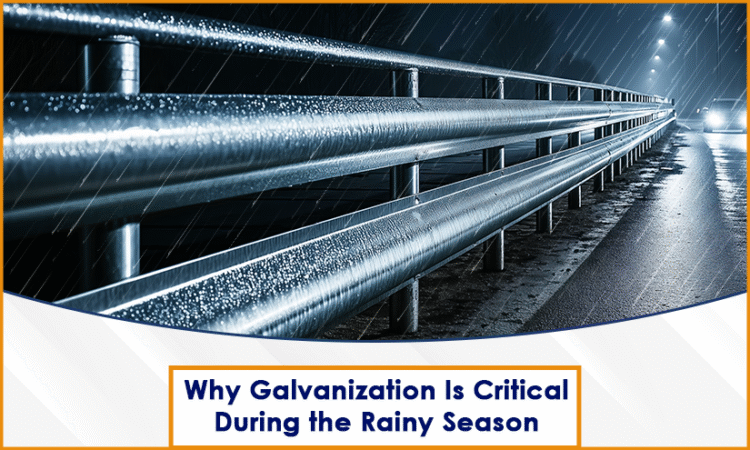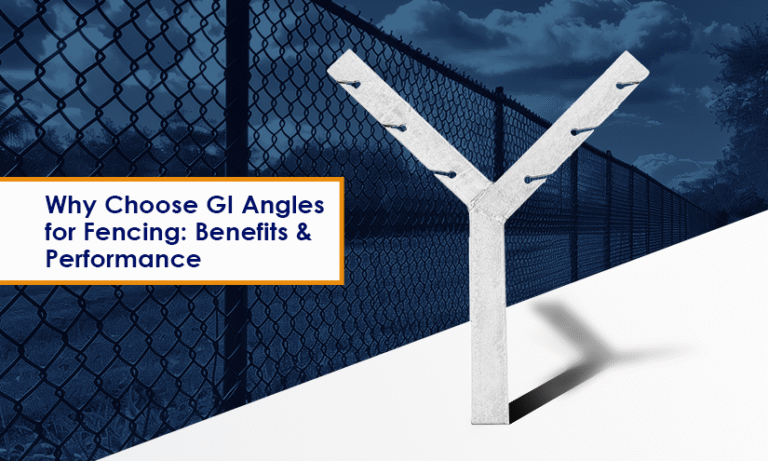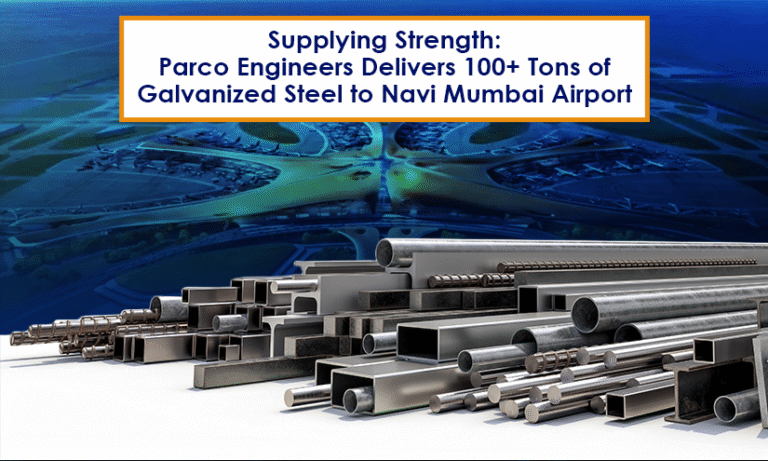Why Galvanization Is Critical During the Rainy Season
Rainy seasons can be a blessing and a challenge as well, especially with infrastructure and industrial materials. Rain is great for nature, but for metals used in construction and manufacturing industries, it can result in catastrophic damage. Galvanization is more than just a process, it is a necessity for protection. As a company, Parco Engineers recognizes the importance of durability and protection through galvanization, especially in wet and humid conditions. In this blog post, we will discuss why galvanization is important through rainy seasons, the different methods of galvanizing and where galvanization is important.
The Impact of Rainy Seasons on Metal
When rain and moisture creates an aggressive environment when metals are untreated or poorly protected. Rain, especially acidic rain, permeates through surfaces and contaminates metals. With metal surfaces it is moist, i.e. when they are first exposed to water, the metal begins to oxidize — leading to rust and corrosion. Rust affects the appearance and the structural integrity of the metal. Consequently, metals intended for outdoor use and subsequently left untreated can have severe implications for safety on structures where they are installed, such as on bridges, beams, railings, etc.
How Galvanization Protects Metals
Galvanization is the process of adding a protective layer of zinc to steel or iron to protect it from rusting. The galvanized layers of zinc act as a physical layer that prevents water, air, and other corrosive conditions from creating rust on the base metal. In addition, since the galvanized zinc is applied above the base metal and is slightly more reactive, galvanization uses a process called “sacrificial protection,” which refers to the property of the zinc layer to corrode prior to the base metal, thus protecting the base metal underneath the zinc coating.
There are many advantages to the galvanizing process, especially in rainy seasons. Advantages to this process include:
Corrosion resistance: A galvanized surface can resist water and humidity that would ruin a painted surface.
Durability: Hot dip galvanized steel can last anywhere from 10 to 100 years (with no significant maintenance required) so long as the coating remains intact.
Cost savings: A durable product like hot dip galvanized steel saves money by not requiring frequent repairs or replacements.
Low maintenance: Requires minimal upkeep, even in harsh weather conditions.
Key Applications Where Galvanization Matters Most in Rainy Seasons
Bridges:
Bridges are constantly exposed to the environmental elements. If hot dip galvanized beams are used for bridge railings it ensures safety and long lasting integrity.
Beams:
Like other structures, the structural steel beams in buildings or other infrastructure are highly susceptible to rust and wear as a constant exposure to moisture.
Railings:
For staircases, balconies, walkways, or other types of external railings there should be no inferior solution to galvanized railings (handrails) , since galvanized railings (handrails) can prevent rust and still look good.
Cable Trays:
Galvanized cable trays protect electrical connections from water exposure.
Different Galvanization Methods: Which is Best for Wet Climates?
Galvanizing is not a one-size-fits-all method. It is essential to use the proper galvanization methods for moist or humid settings. Here are the most common galvanization methods.
1.) Hot-Dip Galvanizing
Hot dip galvanizing starts with the steel being submerged into molten zinc, coating it in a thick, tough galvanized coating. The process of hot dip galvanizing allows a metallurgical bonding to take place between the zinc and the steel, which allows the product to seamlessly bond with the ever present steel!
2.) Electro-Galvanizing
Electro-galvanizing utilizes an electroplating process to apply zinc to the surface of the metal in a fairly thin layer. It is favored for jobs where a smooth, uniform, and shinier finish is desired. It provides clarity and appearance, making it suitable for indoor or less corrosive environments. Electro galvanizing does not provide as much corrosion protection as hot dip galvanizing. While it does provide a nice finish, hot dip galvanizing will always come out on top when it comes to longevity, durability and strength especially in harsh outdoor conditions due to the coating’s thickness and sacrificial protection.
3.) Thermal Spray Galvanizing
Thermal Spray galvanizing is a method that involves zinc melting and spraying on top of the metal surface. Similar to electro galvanizing, there are benefits to thermal spray galvanizing, flexibility to allow different thicknesses to be applied.
Which Method Should You Choose?
When it comes to choosing the right galvanizing process for the rainy season, the best method will be hot dip galvanizing. Since hot dip galvanized steel has a thicker, more uniform layer of protection, it’s the best method to choose if you have any concern that the structure will be subjected to water and humidity.
Electro galvanizing is the proper choice if you have structures with exposed surfaces that must remain aesthetically appealing and/or smooth to the touch, and if you know that the structure is not exposed as much as a hot dip galvanized structure will be.
For structures that are difficult to transport or install in a dip tank, thermal spray galvanizing provides a flexible and effective alternative
While some consideration must be made as to what galvanizing method to use, the final decision will depend upon the application, environmental considerations, and budget.
Hot-Dip | Electro | Thermal Spray | |
Coating Thickness | Very High | Low | Medium |
Wet Weather Resistance | Best | Fair | Good |
Cost | Moderate | Low | High |
Parco Engineers: Case studies
Parco Engineers has truly been at the forefront of large-scale infrastructure excellence. Every single project carried out by Parco Engineers has featured the use of galvanized steel. In the Mumbai Metro project, Parco delivered more than 60 tonnes of hot-dip galvanized frames. This ensured long-lasting corrosion protection and structural performance for one of India’s busiest urban transit corridors.
In the smart city project — Suraksha, we supplied more than 50 tonnes of hot-dip galvanized earthing strips. This enabled the development of a robust and reliable earthing system, which was important for safety and performance.
Also, in the energy, and port sector (BMCT-JNPT Phase 2 project), Parco engineers supplied over 100 tonnes of hot-dip galvanized hand rails, that were designed specifically for marine environments, and optimally designed to resist salt-water corrosion.
In addition, Parco’s long-standing association with the pharmaceutical industry has included their offering of a diversified range of galvanized materials — GI angles, channels, gratings, cable trays, and earthing strips, all examples of the versatility and reliability in using galvanized materials for heavy-duty industrial applications. And to summarize – across urban transit, smart city, industrial, and marine projects, galvanized steel stands as the cornerstone of Parco Engineers’ strategy, the provision of durability, safety and value are the consistent offering across each project.



